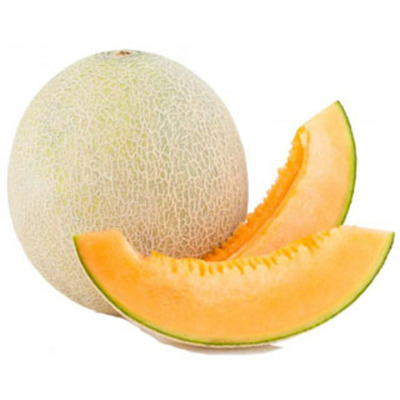
Musk melon Seeds
 Gangagardens
Gangagardens
Muskmelon is one of the popular fruits of the summer season. 100 g serving of muskmelon seeds has approximately 7% carbohydrates, 2% proteins, and <1% of fats. In addition, these seeds are loaded with vitamins and minerals such as vitamin A, C, E, K, niacin, zinc, magnesium, etc.
Images are for reference purposes only.
Actual product may vary in shape or appearance based on climate, age, height, etc.
The product is replaceable but not returnable.
Item Details
SKU
AVMUSMSED17
How to plant Musk Melon
Sow cantaloupe (muskmelon) seed in the garden or set out transplants 3 to 4 weeks after the last average frost date in spring. Start cantaloupe seed indoors about 6 weeks before transplanting seedlings into the garden. Start seed indoors in biodegradable peat or paper pots that can be set directly into the garden. Cantaloupes require 70 to 100 frost-free days to reach harvest; cantaloupes will tolerate no frost.
Care
Cultivate carefully around vines until they cover the ground and smother out competing weeds. Mulch around melon plants with straw or dry, chopped leaves to retain soil moisture, slow weed growth, and keep fruits off of the soil. Support melons on a low tripod or A-frame trellis to keep them off the wet ground; use netting or a bag to support trellis- or fence-grown melons. Pinch back flowers to permit just 4 fruits to form on each vine. Fewer melons on a plant will be larger, sweeter, and come to harvest quicker. You can also pinch away some flowers so that a newly pollinated flower begins growing a new fruit every two weeks. This can stagger the harvest of fruit from one plant. For melons sprawling across the ground, place a shingle, tile, half milk jug, or clay pot under each melon to keep it dry and prevent rot. These items will also soak up solar heat and keep the fruit warm at night. Avoid pruning leaves off of plants until just before harvest. Leaves help produce the sugars melons need for sweetness. Pull back leaves that cover fruits to give fruits maximum sun exposure. Remove all new blossoms that appear within 50 days of the first frost in autumn. This will allow the plant to ripen fruit already on the vine before the first frost.
Pests/Diseases
Melons are susceptible to wilt, Alternaria leaf spot, stem blight, powdery and downy mildew, and root rot. Plant disease-resistant varieties. Keep the garden clean and free of weeds and plant debris that can harbor pests and diseases. Remove and destroy disease infected plants immediately. Bacterial wilt is spread by cucumber beetles. Bacterial wilt and stem blight will cause melons to suddenly wilt and die. Control cucumber beetles as soon as they appear. Powdery mildew and downy mildew are fungal diseases that will cause melon leaves to turn gray-white late in the season. Protect leaves against fungal disease by spraying with compost tea or a solution of 1 part skim milk to 9 parts water. Select disease-resistant varieties. Improve air circulation by spacing plants properly.
_-_Bulbs_(set_of_10)_2.webp)
_-_Bulbs_(set_of_10)_3.webp)